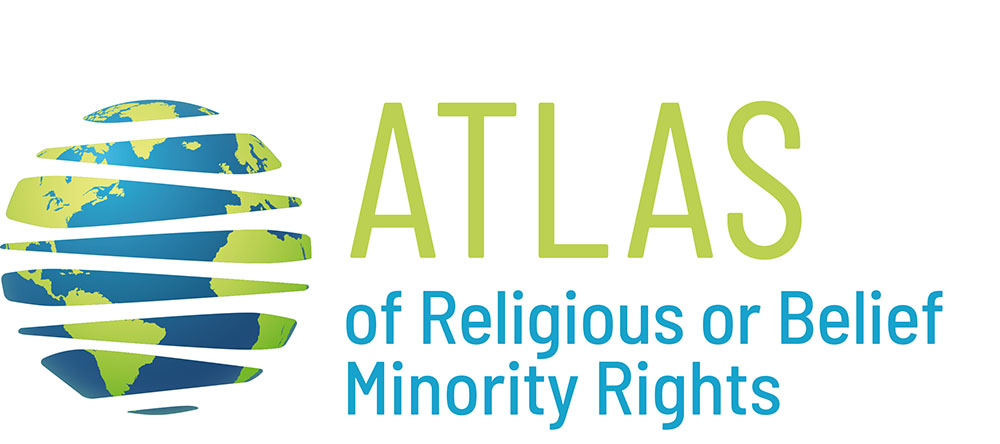HISTORICAL BACKGROUND
The roots of the sociocultural and psychological factors determining Austrian law on religion go back to the Habsburg Counter Reformation and the enlightened church policy of Joseph II, which remained influential until the 19th or 20th century. Because the ecclesiastical legislation currently in force emanates from all the various political systems operating in Austria since the beginning of the 19th century, reflecting the state of religious policies of their time, a systematic understanding of the law on religion is difficult to achieve.
The 1867 Staatsgrundgesetz (StGG: Constitutional Act on the Fundamental Rights of Citizens) signalled a reduction in the denominational bias of the State and the introduction of a denominationally neutral system in ecclesiastical matters; in practice, however, the State administration continued to favour the Catholic Church. In the Bundesverfassungsgesetz (BVG: Federal Constitution of the Austrian Republic) of 1920, the StGG was retained in principle due to a failure to agree on a new set of fundamental rights.
After lengthy negotiations, a Concordat with an Additional Protocol was concluded on 5 June 1933 and came into force on 1 May 1934 together with a corporative authoritarian Constitution.
The Anschluss to Nazi Germany on 13 March 1938 brought an end to the traditional denominational structure of Austria. The Concordat of 1934 was declared invalid, but the Concordat of the German Reich was not extended, so there was no concordat applicable to Austria. According to the Nazi administration, therefore, this situation created an opportunity to establish an exemplary Nazi church policy of a strict separation in Austria.
After the reconstitution of Austria in 1945, several laws relating to religion were transferred almost in bloc to the legal system of the Republic.
Initially, the validity of the Concordat 1933 in domestic and in international law was unclear. In 1957 the Federal Government expressly recognised the validity of the Concordat and an active period of legislation on religion was initiated which in particular brought about a renewal of the law for specific recognised churches and religious societies. A further tranche of legislation on religion was introduced in the 1990s, with the specific aim of coping with the problems related to the emergence of new religious movements. A third wave of legislation brought a renewal of the IsraelitenG. 1890 (in 2012) and the IslamG. 1912 (in 2015) and an amendment of the OrthodoxenG. 1967 (in 2011).
Richard Potz
Potz, R. (2019). State and Church in Austria. In G. Robbers (Ed.), State and Church in the European Union. Baden-Baden: Nomos, pp. 435-437.
RELIGIOUS AND BELIEF MINORITIES IN AUSTRIA
Historically, up until the 19th century the Roman Catholic Church dominated political and social life in Austria. The enactment of the Basic Law of 1867 broke that dominance, gradually introduced steps towards secularization, and paved the way for a more diverse religious landscape. Today, a slight majority of the Austrian population still adheres to Catholicism, but the share of citizens that belong to any other of the 16 legally-recognized religious communities—as well as those without any religious affiliation—is steadily growing.
The religiously-neutral Austrian state approaches religious communities mainly through the lens of freedom of religion; religious minorities are neither defined nor mentioned in Austria’s constitution as such. However, for historically recognized churches and religious communities, legal positions and external legal relationships have been developed by their own special laws such as, among others, the Concordat between the Holy See and Austria dating back to 1933, the Islam Law Act of 1912 (which was amended in 2021), or the Law on the Protestant Church 1961.
The legal framework for the governance of religious diversity contains a system of three different legal categories, each of which provides different rights and obligations for religious communities. These encompass legally-recognized religious communities with public law status, state-registered religious denominational communities with legal entity status under private law, and religious associations under civil law (listed in descending order of status). This sort of hierarchy has been frequently criticized by legal as well as religious studies scholars
Religious minority groups alike share scholarly criticism, as the legal system divides groups and impedes on their legitimate claims for recognition, ascribing them a second- or third-class status.
Any of these legal relationships between religious communities and the Austrian State follow the principles of neutrality and non-identification, parity, and self-determination. Nevertheless, legally-recognized religious communities are partners on an equal footing in matters such as religious education or spiritual care. Thus, only legally-recognized Churches and recognized belief communities have the right to joint public religious practice, to autonomous arrangement and administration of their internal affairs, to the possession and enjoyment of their institutions, of endowments and funds devoted to worship, to religious instruction in public and private schools, and to religious welfare. So far, sixteen churches and religious communities managed to achieve full legal recognition. In addition, nine religious communities among them—e.g. the Bahá‘í community, the Islamic-Shia Faith Community, or the Hindu community—belong to the category of state-registered denominational communities.
Austria was long considered a model of success for the accommodation of religious diversity, not least regarding Islam. The early legal recognition that placed Muslims on an equal footing with followers of other recognized religious communities dates to 1912. However, today the relationship with Islam and Muslim faith organizations is increasingly dominated by the fight against so-called political Islam.
Kerstin Wonisch
RESOURCES
Data and information concerning religious demography are provided by Todd M. Johnson and Brian J. Grim, eds., World Religion Database (Leiden/Boston: Brill).
General information on minority issues (including some references to religious or belief ones) can be found at the page devoted to Austria in Minority Rights Group International, World Directory of Minorities and Indigenous Peoples.
The text of the main legislative acts concerning freedom of religion or belief can be found at https://legislationline.org/.
Legislative acts on the legal status of the main religious denominations are available (in German) at https://www.bundeskanzleramt.gv.at.
About the legal condition of religions see also
Bundeskanzleramt, Religionen in Österreich: Übersicht der in Österreich anerkannten Glaubensgemeinschaften, Wien, 2020 (available in Weiterführende Informationen, at https://www.bundeskanzleramt.gv.at.
A report on the Austrian legal system and government policies about freedom of religion (with some references to religious or belief minorities) is provided in Department Reports and Publications - United States Department of State.
An overview of the main religious organizations is provided (in German) in
Bundeskanzleramt, Religionen in Österreich: Übersicht der in Österreich anerkannten Glaubensgemeinschaften, Wien, 2020 (available at https://www.bundeskanzleramt.gv.at.
A brief overview of the Office of Religious Affairs’ activities is available at https://www.bundeskanzleramt.gv.at and further material (in German) at https://www.bundeskanzleramt.gv.at.
For an analysis of the State-religion legal system see
R. Potz, & B. Schinkele, Religion and Law in Austria, Alphen aan den Rijn: Wolters Kluwer, 2016.
INTERACTIVE INFOGRAPHICS
0 respect of international standards
-1 restriction of rights
0 equal treatment of RBMs
-1 high gap between religious majority and minorities

 MENU
MENU
 CLOSE
CLOSE


